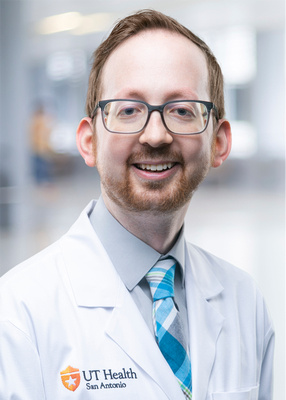Explore all of UT Health Physicians
- Search for a Provider
- Find a Location
- Find Primary Care
- Find a Specialty Practice
- View all of our Services
Patient Information
- About Us
- MyChart Login
- What is MyChart?
- Pay Bill Online
- Phone Directory
- Medicare Annual Wellness Visits
- Major Insurance Plans
- Medical Records Request
Physician Information
Spring into action: tips to safely avoid and heal sports injuries
Longer days and warmer weather are ahead, and the spring sports season has started. For many athletes and weekend warriors, the new season can also bring new injuries, or at least the risk of getting one. Jeff Svec, MD, a primary care physician with UT Health Physicians who specializes in both sports medicine and family medicine, offers these tips to avoid new injuries and care for past injuries, so you can play it safe this season.
Tips to avoid sports injuries
“There are a few ways that athletes — or anyone doing physical activity — can be proactive about preventing certain sports-related injuries. That’s by following good practices before and after they play,” Dr. Svec said. “Get a physical exam, start conditioning before the season and get into a stretching regimen to make sure muscles are not so tight. For student athletes, it can be good to play different sports throughout the school year so that the full body remains conditioned. Weightlifting and cardio can also help.”
Spring sports, such as track and field, baseball, tennis and golf, have some common injuries associated with them. For example, shin splints may occur while running track. In baseball, rotator cuff tendinitis or bursitis may present itself. And with tennis, sprained ankles can be common. Dr. Svec says stretching and doing exercises to improve strength is the key. In some cases, taping or bracing can help avoid past injuries.
“It’s also important to listen to your body and look for certain signs that could indicate when you should see a doctor,” Dr. Svec said. “Things like head injuries, noticeable weakness or instability in a joint can be danger signals. Noticeable swelling and limited range of motion — meaning you can’t move something as much as you used to — are also signs that your injury needs to be addressed. By listening to your body and not pushing your limits, you can avoid further injury.”
Timely treatment of injuries
Dr. Svec and the UT Health Physicians staff can offer whatever may be needed to treat the injury. For example, they can prescribe physical therapy, coordinate with school athletic trainers or prescribe anti-inflammatory medications for children and teens. For individuals age 18 and older, home exercise regimens and steroid injections may also be considered, although injections are typically a last line of treatment. Treatment also may include ruling out whether there is a tear or other serious issue present which could require surgery.
“For minor injuries such as sore or pulled muscles, my recommendation would be to rest and not try to get back into the activity too quickly,” Dr. Svec said. “Icing a localized injury and using over-the-counter anti-inflammatory medications are also recommended. If pain or weakness continues after that, the person should see a doctor.”
Dr. Svec also emphasized that treating, rather than ignoring, sports injuries is important. Concussions or head injuries should be promptly addressed because the exam can rule out more severe traumatic brain injuries that may require urgent treatment. With a fracture, not getting seen by a doctor quickly enough can make it harder to get the bone back in place so that it can heal properly. And, if someone waits a significant amount of time, it can heal improperly, which may cause problems later in life because the bone is abnormally aligned, throwing off the mechanics of the body.
“In addition to head injuries and fractures, torn ligaments should be addressed quickly,” Dr. Svec said. “The main reason is that some torn ligaments require surgical repair or reconstruction which can lead to a long recovery, so you will want to see a doctor quickly to determine if surgery is necessary. Starting recovery right away will help ensure you don’t have to sit out next season because you waited too long to seek treatment.”
For more information about UT Health Physicians team of specialists dedicated to providing complete, coordinated care and healing for student-athletes and weekend warriors, click here. To make an appointment, call 210-450-9000.
Featured Doctor

